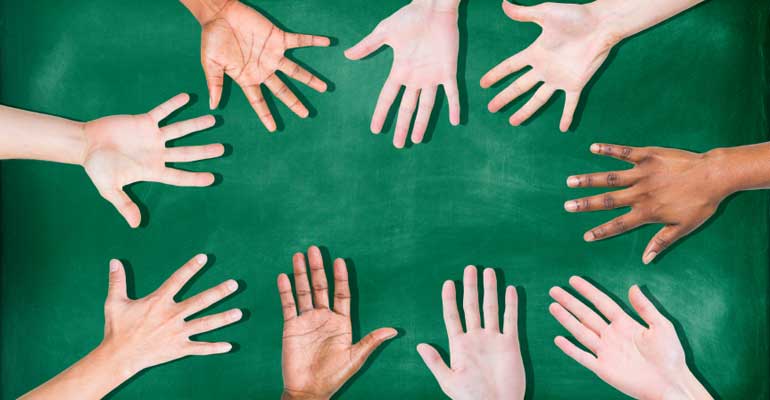My twin daughters enrolled this year in our local public elementary school. As their advocate, I am committed to educating my fellow teachers about ways in which a positive approach to adoption can improve all children’s education. Here are some of my thoughts.
- As the teacher, what you believe matters. Your unconscious stereotypes will be communicated to the class. Don’t assume “Sean McLaughlin” cannot be the correct name for the child who looks Asian or Guatemalan. Or that an adopted child’s family of origin was impoverished or unstable. Don’t assume that a child is lucky to have been adopted or say, “What would her life have been like if…?” You would not say that to a biological parent, so please don’t say it to an adoptive one.
- There are neither real families nor fake families. Adoptive parents are parents. In families with children through both adoption and biology, all the children are their parents’ children. So don’t ask, “Which are yours?”
- Genetics and immigration can be taught without requiring students to trace their nuclear family roots. Children can be given options for the family tree projects, such as including all the people in their lives who love them. Biology students can do genetic coding based on any given set of characteristics.
- Don’t make kids feel different by asking them to do something they cannot do. “Student of the week” projects can be structured to encourage students to share their lives from any age. For many children it is impossible to share details from their infancy. For those children, expecting baby pictures or descriptions of their first year of life is unreasonable.
- There are many excellent children’s books about adoption. Schools will want to have at least three or four per classroom and more in the library.
- Intrusive questions about adoption and birth parents from their schoolmates are a fact of life for many kids, especially in the very early grades. Your attitude and the information you provide will help children in your class handle their classmates’ curiosity.
- Adoptive families often celebrate different family milestones. These include “Gotcha Day” (the date the child joined the family), Adoption Day, (the date the legalities were completed), along with the child’s actual birthday. Some families include mention of their child’s birth family in Mother’s and Father’s day celebrations. Teachers will want to discuss “alternative” family celebrations with parents of children in their class.
- Children born outside the U.S. are not experts on the culture and language of their birth countries. As “American” as most of their peers, they should not be expected to serve as representatives of the cultures of their birth in the classroom.
- Information on adoption is widely available in bookstores, online, and through local adoption organizations. Nowadays almost every classroom is likely to include adopted children. Search out and use information about adoption. A great place to start is by ordering a copy of Adoption and the Schools: A Resource Guide for Parents and Teachers, by Lansing Wood and Nancy Ng, available at FAIR.


